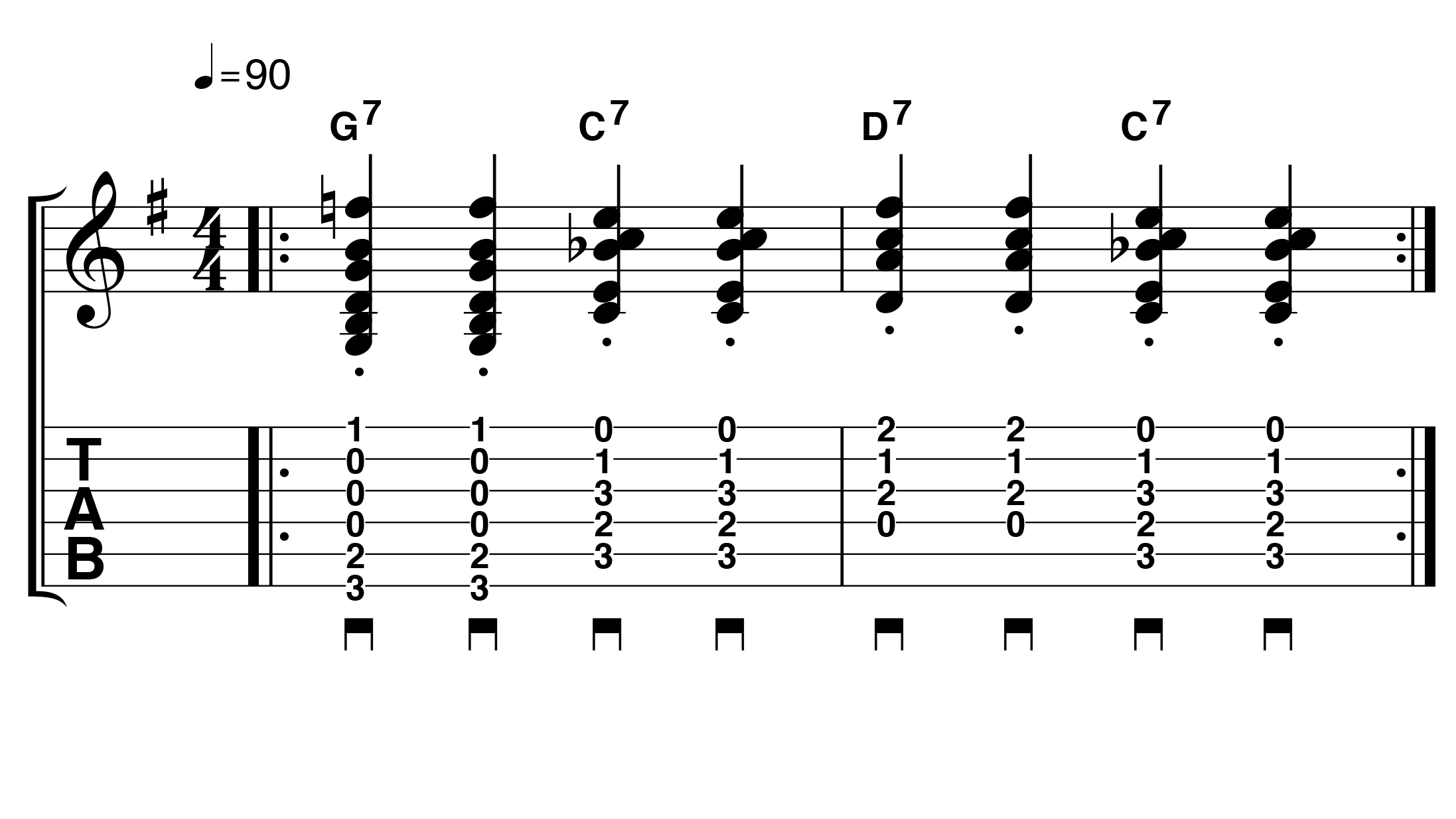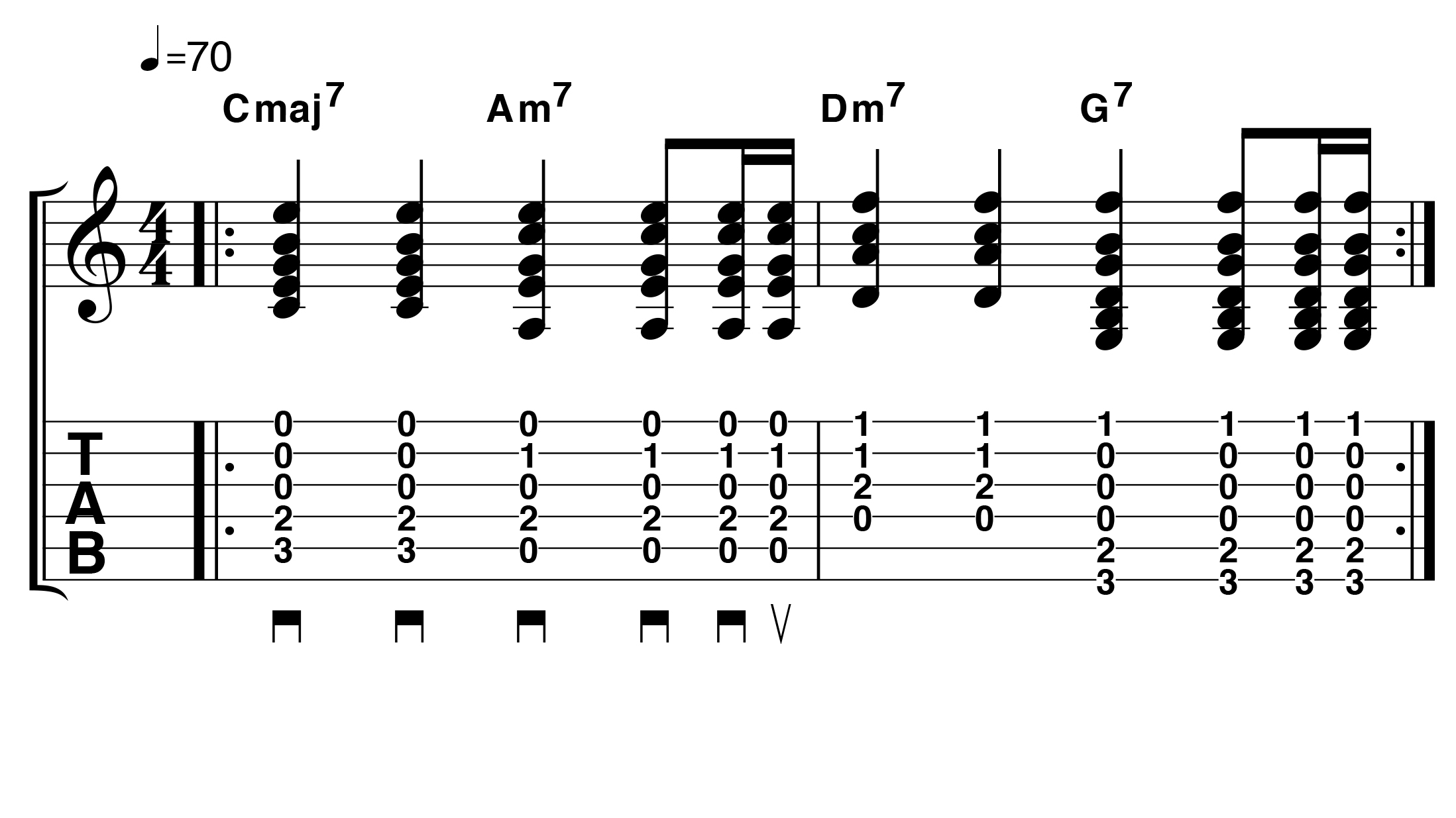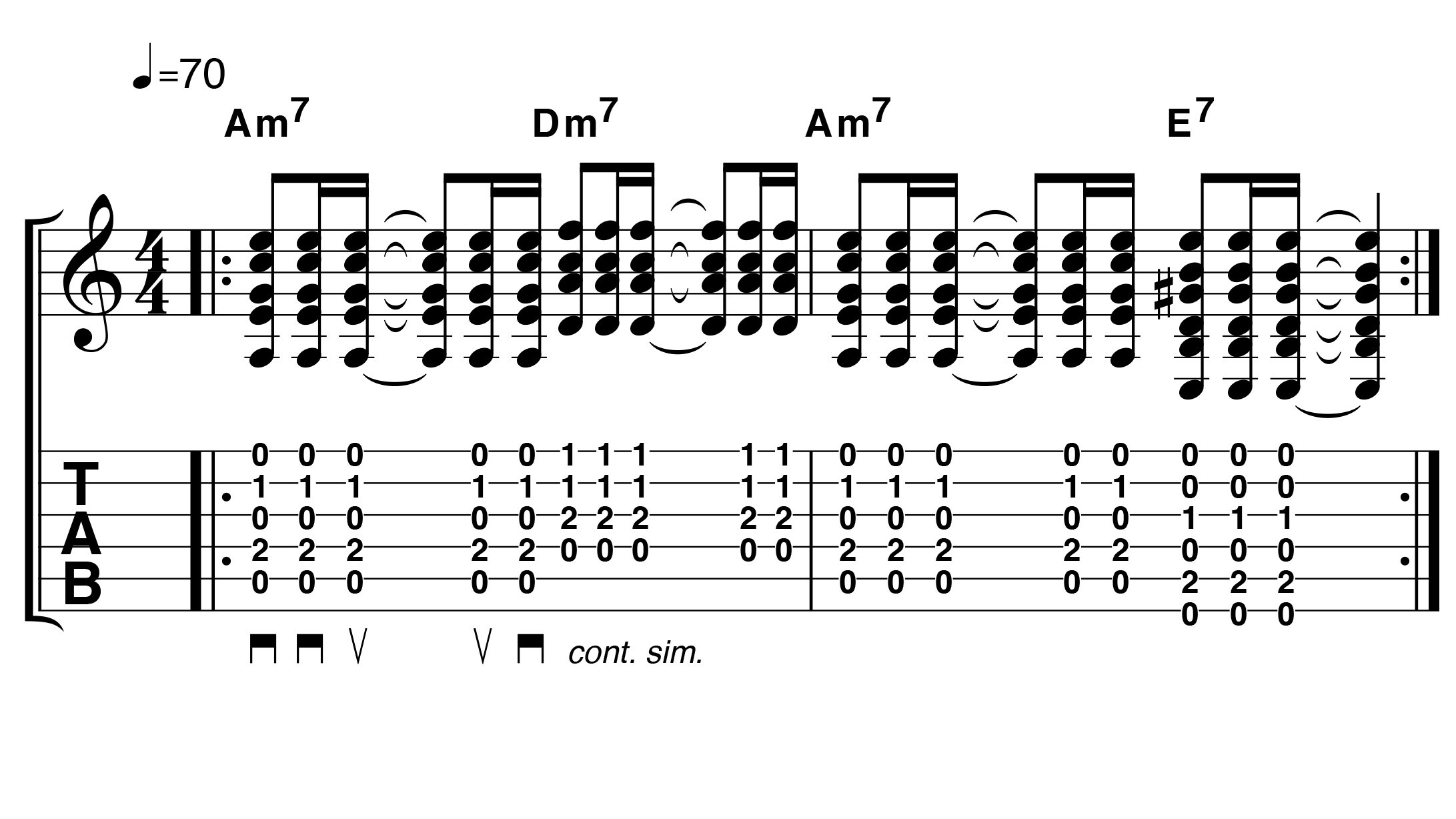
A great way to get started writing a song is to use a well-known chord progression. Certain progressions have been used thousands of times throughout the history of recorded music, so there’s no reason you shouldn’t use these three popular examples. It might feel like cheating at first, but, once you get started, inspiration will strike and you can head off into more creative uncharted territory.
We’ve tabbed out three chord progressions for you to try out here. Of course, experimentation is the name of the game, so use these as springboards for your own ideas.
Chord progression numbers explained
Sometimes chord progressions are referred to by numbers and this can make talking about music sound complicated. It actually just means that chords are built on a certain note of the major scale.
For example, G-C-D is a ‘I-IV-V’ (one-four-five) progression in the key of G because G, C and D are the fi rst, fourth and fifth notes of the G major scale (G A B C D E F#). These chords are usually written in Roman numerals, and if the chord is minor it's usually written IIm, VIm and so on.
Blues and rock standard

This progression is the classic I-IV-V chord run at the heart of countless rock and blues songs – and many other styles too. Try the same idea with A7-D7-E7 or E7-A7-B7.
50s sound

This progression gained popularity in the 50s and 60s, appearing in many pop songs and jazz standards of the time. You can use it in other styles though, so jam around the progression and make sure to add your own ideas.
Minor blues

This sequence is essentially a I-IV-V, but with two minor chords and one dominant 7th.
Try using Em7 instead of E7 – you’ll should hear how Em7 still works but the E7 ‘pulls’ the sequence back to the start more strongly.







